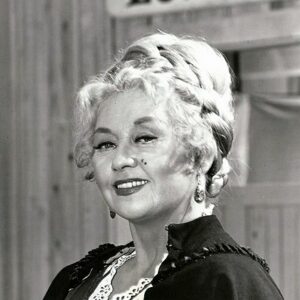If you are of a certain age — say, old enough to be president of the United States in 2023 — you might remember the TV sitcom “Here Come the Brides.” (If you aren’t a certain age, you didn’t miss much.)
Apart from making Bobby Sherman a teenage heartthrob, it was a tale of lumbermen and young maidens in Washington Territory immediately after the Civil War.
Sidesplitting comedy it was not. But this tale of frontier men thrown together with imported females was loosely (very loosely) based on true events.
In the mid-19th century, the Pacific Northwest was about as close to the middle of nowhere as it came. The region was filled with trees and fish, which meant an abundance of loggers and fishermen. Women, on the other hand, were in short supply. It’s estimated the ratio was 10 males to every female; if a woman was 15 or up, she was probably wearing an engagement ring.
That imbalance troubled Asa Mercer. Born and raised in Illinois (he claimed Abraham Lincoln had urged him as a boy to travel), his family was among the first to put down roots in a new little town called Seattle. He went East for college, then returned to his new home on the West Coast. Two years after turning the tassel, Mercer helped his brothers construct the Territorial University of Washington, the forerunner of today’s University of Washington, in 1861. Being the only college-educated man around, he became the school’s sole faculty member and president. (With no salary.)
By 1864, he was pushing 25, single, and with no matrimonial prospects in sight. Then he got an idea. Realizing the problem boiled down to simple supply and demand, he would go where the supply was in the East and bring women to where the demand existed in the West.
The Civil War had been raging for three years. As casualty lists grew higher, the pool of eligible bachelors dwindled. Those who did escape unscathed were fighting far from home, meaning mighty slim pickings for a woman looking to tie the knot. Mercer’s plan was simple: He would travel to the northeastern United States and offer to escort any marriageable lady willing to relocate to Seattle, where prospective husbands would be in plentiful supply,
Washington’s territorial governor gave the scheme his blessings and enthusiastic support, but no money. Undaunted, Mercer set off. In the days before the transcontinental railroad and the Panama Canal, it was no easy trip. He went first to Boston, then to the industrial town of Lowell, Mass. He was armed with a sheaf of letters of recommendation, plus invitations from respectable married couples to host the young women, thus reassuring nervous Victorian morals.
When Mercer was ready to go back West, 11 women went with him, far below the 50 as he had hoped. (The fathers of three young women accompanied them to make sure everything was on the up and up.) They sailed down the Atlantic Coast, slogged across the Isthmus of Panama, and then headed for San Francisco, where local boosters unsuccessfully tried to entice the women to stay.
There was a grand welcome ceremony at the Territorial University on May 16. The women were the belles of Seattle. Nine of the Mercer Girls quickly married. (One died unexpectedly shortly after their arrival, and Lizzie Ordway, the oldest at 35, didn’t receive a proposal.) Still, with an 81.8 percent success rate, the venture was deemed worth repeating.
Mercer had big hopes for his next trip. He charged men $300 (about $11,000 today) to find and fetch a suitable mate and was flooded with hundreds of applications. But things quickly fell apart.
His timing was rotten; he arrived in Boston just as Lincoln was assassinated. The York Herald published a major expose claiming the women would be dumped in waterfront dives or wed to old men. That bad press seriously hurt recruitment. When Mercer set sail on January 16, 1866, fewer than 100 women traveled with him — far below the 500 he had promised to deliver.
The ship’s captain refused to sail beyond San Francisco. Some women called it quits and stayed there. The rest were shipped to Seattle on lumber schooners. When Mercer finally made it home, the men who had paid him the year before were angrily awaiting him. There was a big town hall meeting on May 23 where Mercer seemed to smooth everything out, and tempers cooled — chiefly because he had dozens of women with him.
That ended Mercer’s dabbling in the mail-order bride business. But the project wasn’t a complete failure. The majority of women did marry. Many of Seattle’s leading families can trace their lineage to those brave women who took a big chance so long ago.
And on July 15, 1866, Asa Mercer married Annie Stephens, who had come with him from Baltimore. They had eight children and stayed together for the next 34 years.


